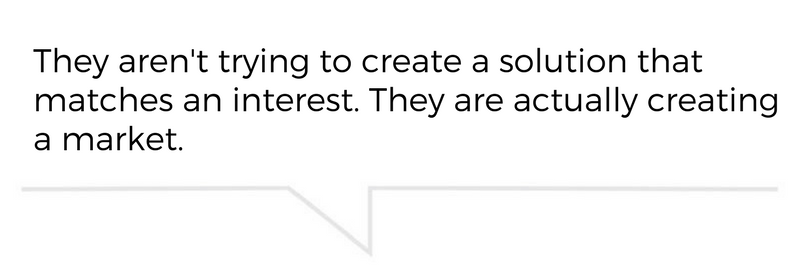Q&A: Why Formula E Is Eyeing a New Market
In the race to engage millennials, Formula E didn’t bother to ask anyone what they wanted. So how has it managed to attract such a coveted group?
By Adrienne Dawson

To traditional motorsport fans, Formula E — open-wheeled cars running completely on electric energy and racing through city streets instead of around permanent tracks — might lack appeal. Among other things, these cars aren’t as fast (for now) and make very little noise — big sticking points for gearheads.
But Alejandro Agag, Formula E’s founder and CEO, isn’t trying to appeal to the traditional Formula 1 or NASCAR crowd. Instead, he wants to create something new for a group that — traditionally, at least — has cared very little about racing: millennials.
But to create a new entertainment ecosystem requires an entirely different mindset. And Formula E has it, say McCombs Professor Sirkka Jarvenpaa and Dr. Willem Standaert from Belgium’s Vlerick Business School. Here, Jarvenpaa explains the key difference to Formula E’s approach to innovation. It all begins with what she and Standaert call ‘entrepreneurial probing.’
How would you characterize Formula E’s approach to motorsports?
We believe their approach is a major disruption in motorsports, as they are about shifting the logic on which a business creates its value proposition.
How so?
It’s not about making a product or a solution, as one would traditionally think of in a business. Formula E’s value proposition is about the engagement with millennials. Millennials are a very heterogeneous group. They have shorter attention spans, less money to spend, and are less interested in car ownership than previous generations. They will have to feel like part of the performance. Formula E is constantly creating new marketplaces and platforms that allow partners and fans to interact in ways that weren’t possible or imaginable in existing motorsports environments like F1 or NASCAR.
What’s an example of that?
In Formula One, the business model is about getting people to pay hundreds of dollars to attend races at dedicated racetracks or buy cable subscriptions to watch the races at home, but Formula E races have very low ticket prices, and the races are brought to the people, in the heart of the city. The racing events create “spectacles.” They mix traditional racing and driverless-car roboracing along with music, gaming, and virtual competitions — and this all happens at the same event.
Moreover, Formula E’s race content itself is given away for free over the internet, through a mobile app, social media streams, and even virtual reality. Indeed, they pioneered 360-degree video and virtual reality in the motorsports world because they know that 99 percent of their fans can’t attend races in person.
The focus is not on how to become profitable but how to grow and scale the ecosystem with diverse partners and user bases. The point is to broaden the net, to catch more fish.

Formula E is a start-up. How has it been able to innovate to this degree?
Most entrepreneurs have resource constraints, so they have to come up with the initial product and expose it to some customer segment, get feedback, and refine the product. That’s the traditional route in entrepreneurship, and it will continue to be true. It’s what we call ‘experimenting.’ It’s an iterative, incremental process.

But Formula E is different. We call what they do ‘entrepreneurial probing.’ They want to attract millennials, but they haven’t asked millennials what they would like to see or do at a traditional race like F1 or NASCAR. They aren’t trying to create a solution that matches an interest. They are actually creating a market. They’re trying to shape what millennials could be interested in.
Could you talk more about entrepreneurial probing. Is this is really a new method and mindset?
It is. Entrepreneurial probing is about pushing for new interactions and sensory possibilities afforded by the latest technologies. Probing provokes and strives for what seems inconceivable and even outrageous. The concept has its roots in interactive design and goes back to the 1990s. Our contribution is extending the concept to opportunity formation in an ecosystem setting.
One of the earliest examples of probing was when a design team of 20-somethings in Amsterdam began working with a group of elderly residents who lived in unsafe neighborhoods. The elderly were worried about going outside and getting around town because of violence. This design team wanted to find solutions that would help an 80-year-old feel comfortable and safe outdoors. So while they knew who they were designing for, they were completely unfamiliar with that audience. They started coming up with all kinds of ideas. They even suggested a bullet-proof cage. Of course, this is outrageous, and none of their elderly clients would want to use a cage, and they knew that. But the process released preconceived notions about what could work and introduced options that no one had brought up previously.
Put differently, you aim for something outrageous and see how different user bases make sense of it?
That’s right. Again, entrepreneurial companies generally explore by coming up with a product that addresses a need, then test it out, get feedback, and make iterative changes. Iteration and feedback. If something doesn’t make a big splash, they keep pushing it anyway. The innovation adage now is to experiment and scale — ‘E&S’ instead of R&D. Entrepreneurial probing is different. It’s the process of trying many new things at the same time and have the ecosystem, like a living organism, pick up what works and refute what doesn’t. In the case of Formula E, they are running the business with the logic that if you don’t get an idea trending, it’s better to move on. They don’t try to refine what doesn’t work and make it more acceptable.
Is Formula E doing this all by itself?
No, it’s at the center of a huge ecosystem, which includes other start-ups and well-established firms. These days you cannot go it alone. Think of the iPhone and its apps as an example. How could anyone dream up all the possible services we use now on a device we previously only used for talking and texting.
Remember that Rome wasn’t built in a day. The things we take for granted now came about through countless interactions among various and diverse players over time. As they engaged new user groups, the ecosystem grew.

Also, the route to Rome was not built as a straight highway. There are many small and meandering paths to Rome that intersect serendipitously. Some paths will have a dead end, but others are like snowballs down a hill that rapidly pick up everything and everyone they pass by. Think of Facebook. The question then becomes will the obstacles in the landscape simply divert the snowball, or will they bring it to a halt?
You write that pursuing radical opportunities in an ecosystem requires an entrepreneurial firm to take significant risks and venture into landscapes where you don’t know what you don’t know. What is Formula E’s outrageous idea?
The extent of fan influence and participation is perceived as outrageous by many. For instance, they have a FanBoost feature that allows people to vote online for their favorite driver. The three drivers with the most votes get an actual power boost that lasts for five seconds. That means it’s no longer just a spectator sport. Fans help control the outcome.
Is entrepreneurial probing a sustainable approach?
Sustainability assumes scarcity of resources. There’s a lot of money in sports, and if you combine sports and entertainment, the pockets are nearly infinite. We are talking about environments with abundant resources if the network of partners is growing. Indeed, Formula E’s CEO has commented that the series could have been profitable by now, but it has chosen not to, to further expand its reach. So the key question to ask is whether Formula E can keep up with the relentless pace of innovation. They have introduced a ton of new experiences at the track and for fans at home, but they’ll have to continuously look for different kinds of configurations of experiences. Can they continue partnering with lots of different players and put new experiences in front of different potential customer groups to see what sticks?
“Emergent Ecosystem for Radical Innovation: Entrepreneurial Probing at Formula E” is co-authored with William Standaert at Vlerick Business School. The paper is under minor revision.
Originally published at www.texasenterprise.utexas.edu on September 26, 2017.


